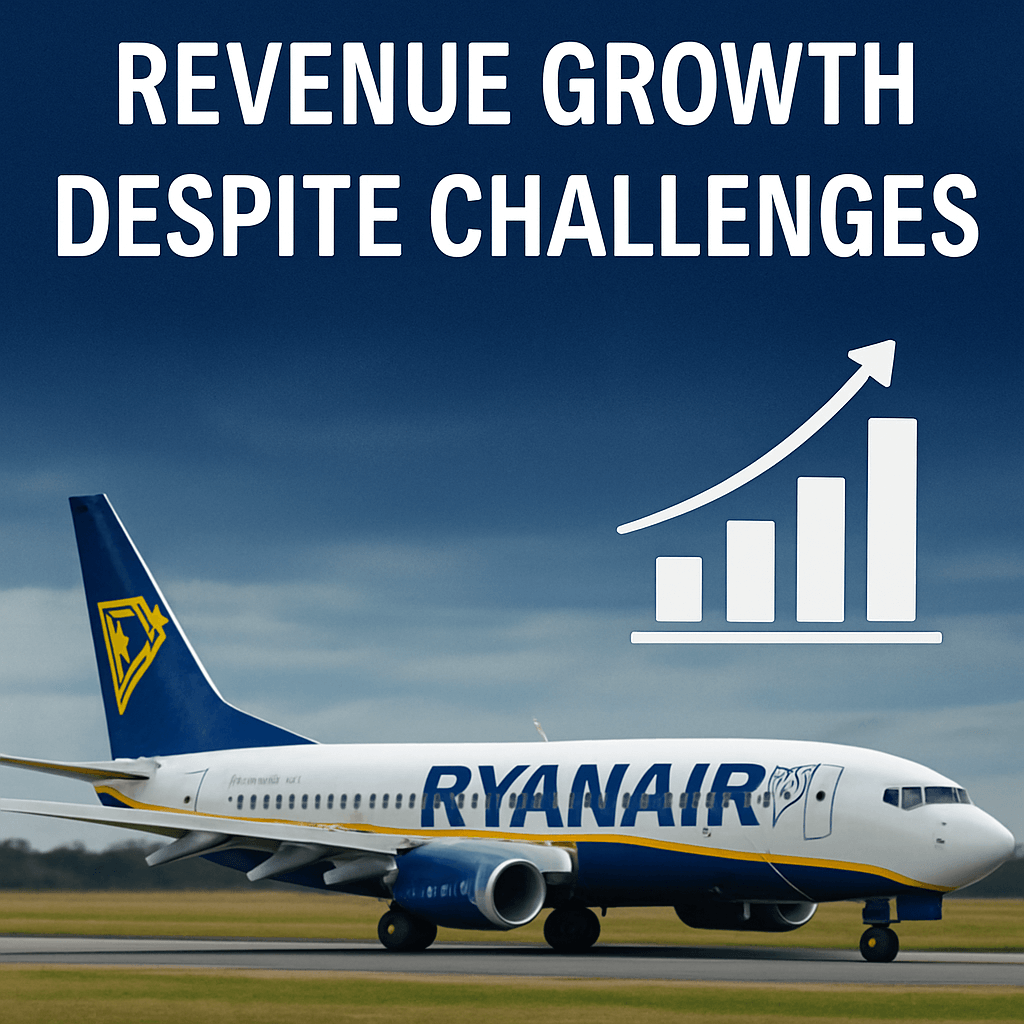Ryanair FY25 Earnings: Revenue Growth Despite Challenges

Financial Highlights
On Monday, Ryanair Holdings plc released its financial year 2025 results, navigating a challenging mix of rising input costs, softer yields and delivery delays. Full-year profit after tax came in at €1.6 billion, down from €1.9 billion a year earlier but matching consensus analyst projections.
- Passenger traffic: 200 million, up 9% year-on-year (vs. 205 million target)
- Total revenue: €14 billion, +4% y/y
- Average fare: €70, down 7%
- Operating costs: €12.4 billion, +9% y/y (flat per passenger)
- Final dividend: €0.227/share (AGM subject)
Passenger Traffic and Capacity
Despite Boeing 737 “Gamechanger” delivery delays, Ryanair carried a record 200 million passengers in FY25. The shortfall from the initial 205 million forecast largely stemmed from a four-month bottleneck in Boeing’s production line. The carrier now expects to handle 206 million passengers by 31 March 2026, aided by accelerated deliveries and seasonal network expansion.
“We are increasingly confident that the remaining 29 Gamechangers in our 210-aircraft orderbook will deliver well ahead of schedule, enabling us to recoup delayed growth into FY27,” said CEO Michael O’Leary.
Revenue and Cost Dynamics
Average fares fell 7% to €70, reflecting competitive market pressures and capacity constraints elsewhere in Europe. However, robust ancillary revenue streams—bag fees, priority boarding and in-flight sales—helped total revenue grow 4% to €14 billion.
Operating costs rose 9% to €12.4 billion, driven by staff wage inflation (+8%), airport charges (+6%) and rising maintenance costs. Offsetting this, fuel costs per litre were effectively capped through a layered hedging program that covered 80% of FY25 consumption at an average price of $60/barrel Brent equivalent. On a unit basis, CASK (cost per available seat-kilometer) remained broadly flat at €0.027.
Fleet Modernization and Fuel Hedging
As of 30 April 2025, Ryanair operated 181 Boeing 737-8200 “Gamechanger” jets, featuring 198 seats, split scimitar winglets, and fuel-burn improvements of up to 16% versus older 737-800 models. New deliveries are expected to lower fuel burn per ASK by 2.5% annually through FY27.
Market Outlook and Constraints
Ryanair warns of ongoing short-haul supply tightness due to Airbus carriers grappling with PW1000G engine inspections. Consolidation in Europe—exemplified by the impending TAP Portugal privatization—and potential new aviation taxes (EU ETS, national environmental levies) also loom as headwinds.
Cost Control Measures and Fuel Strategy
To mitigate inflationary pressures, Ryanair employs a dynamic fuel hedging stack, rotating expiration dates between 6–24 months and using collars to cap upside while allowing limited downside participation. Additionally, aggressive labor productivity initiatives—targeting a 3% gain in staff output per block hour—are under way.
Fleet Modernization and Operational Efficiency
- Deployment of 737-8200s on high-density routes to maximize per-flight revenue.
- Implementation of AI-driven schedule optimization, reducing ground time by 4% and boosting aircraft utilization.
- Use of real-time analytics for proactive maintenance, lowering AOG (Aircraft on Ground) incidents by 15%.
Competitive Landscape and Growth Path
Ryanair’s unit cost advantage—estimated at €0.02 below peers—combined with a robust balance sheet and undrawn liquidity facilities of €3 billion, underpins its ambition to reach 300 million passengers p.a. by FY34. Nonetheless, geopolitical risks in Eastern Europe and Middle East tensions remain key variables.